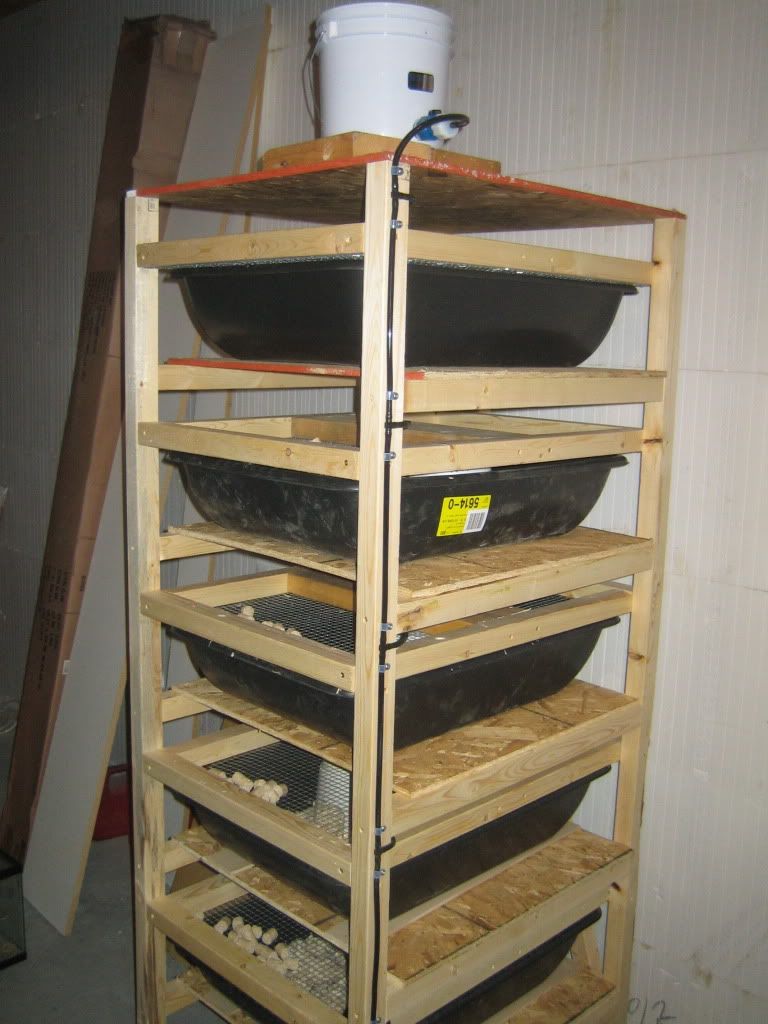








 1
1




I never fail. I don't believe in it. I only succeed at finding what doesn't work.




James Stark wrote:
Ok, so we've hit a topic the new guy is sort of familiar with! My advice: guinea pigs.....meh. I recommend rats. Better feed conversion ratio, fewer issues with "bad moms", and the meat tends to be juicier. Yes, that's right. I raise and eat rats. My business is raising rats for reptile feed, and I realized one day, "well heck, I know I'm feeding these animals a healthy diet, I know they're well treated, why not try it?" Turns out they clean VERY easy, and are great on the barbecue. Similar to rabbit in that it's a dense, protein packed meat. Plus, I much prefer dealing with rats, since they are very intelligent, unlike guinea pigs which I find to be more skittish. I will admit though, it's tough to get past eating them since I really like their personality, and get to know them as they grow.




Len wrote:
Well, no one would guess you were raising them for people food in an urban area. What kind of body weight do you get? The wild ones I kill out the back seem pretty small (I wouldn't eat them as they eat many things including rat poison). Does their higher intelligence make them harder to cage? Easier to get to know? harder to kill? I guess if you keep enough to keep you fed (and sell) there is less bonding ... I wonder what other small animals could be grown as food? (lets stay away from dogs and cats just now even though I have friends who see them as food)
I never fail. I don't believe in it. I only succeed at finding what doesn't work.




 I might try rats sometime down the road anyway though, as i like diversity, and those things i assume eat pretty much anything.
I might try rats sometime down the road anyway though, as i like diversity, and those things i assume eat pretty much anything. 








Len wrote:
Well, no one would guess you were raising them for people food in an urban area. What kind of body weight do you get? The wild ones I kill out the back seem pretty small (I wouldn't eat them as they eat many things including rat poison). Does their higher intelligence make them harder to cage? Easier to get to know? harder to kill? I guess if you keep enough to keep you fed (and sell) there is less bonding ... I wonder what other small animals could be grown as food? (lets stay away from dogs and cats just now even though I have friends who see them as food)




hoosierboy wrote:
Other small animals or animals that are not usually known to be eaten are actually are little friends that look like robbers, raccoons. My friend actually said he tried it and it was pretty good. So that could be something to potential grow as a food source. Anyone here tried raccoon before? If so, how was it?
I never fail. I don't believe in it. I only succeed at finding what doesn't work.








hoosierboy wrote:
Other small animals or animals that are not usually known to be eaten are actually are little friends that look like robbers, raccoons. My friend actually said he tried it and it was pretty good. So that could be something to potential grow as a food source. Anyone here tried raccoon before? If so, how was it?





Len wrote:
I might get shot for helping coons to grow for whatever reason
 . But I'm going to go outside my comfort zone and try foods I haven't before. I gonna ask some people if they know of anyone who knows how to cook raccoon and give it a try.
. But I'm going to go outside my comfort zone and try foods I haven't before. I gonna ask some people if they know of anyone who knows how to cook raccoon and give it a try. 



hoosierboy wrote:
I'm thinking about just creating a thread on the wildest animals people ate. Would be interesting to see what everyones tried.




H Ludi Tyler wrote:
I only have thoughts. Personally, I don't think people should not do things because they think or fear "the authorities" might care what they do. Mostly the authorities don't care. Don't flounce - don't make a big deal about what you're doing. Keep a low profile, don't be a neighborhood nuisance. Keep your place clean. Treat the animals as well as you can (nice spacious pen, clean water, good food, etc). Don't slaughter them where anyone can see, and don't talk about it.
In my opinion.




James Stark wrote:
Ok, so we've hit a topic the new guy is sort of familiar with! My advice: guinea pigs.....meh. I recommend rats. Better feed conversion ratio, fewer issues with "bad moms", and the meat tends to be juicier.




Bob Carder wrote:
James, this is awesome. How do I go about getting started in raising them on a decent scale for meat? Do you have any photos of your set up on the web somewhere? Any information you can point be towards would be great. Thanks, Bob.

I never fail. I don't believe in it. I only succeed at finding what doesn't work.




James Stark wrote:
The system I use is pretty simple. Rack system with automatic waterer. The food is put on top of the steel mesh that covers the top of the bin. The bins slide right out for easy access and cleaning. This is the first one I built. Held 5 bins. My design that I came up with for the rat barn holds 12 bins per rack, and there's 8 racks in the barn.
 1
1




I never fail. I don't believe in it. I only succeed at finding what doesn't work.








Thank you!Synergy wrote:
That is actually impressive James. And being a horse farmer I have had an aversion to rats that is likely uncalled for.
I never fail. I don't believe in it. I only succeed at finding what doesn't work.









I never fail. I don't believe in it. I only succeed at finding what doesn't work.








Buy Our Book! Food Web: Concept - Raising Food the Right Way. Learn make more food with less inputs
Off Grid Homesteading - latest updates and projects from our off grid homestead




I never fail. I don't believe in it. I only succeed at finding what doesn't work.




Buy Our Book! Food Web: Concept - Raising Food the Right Way. Learn make more food with less inputs
Off Grid Homesteading - latest updates and projects from our off grid homestead




Dirt-lovin' tree hugger type, with a few vices....




Crunchy Bread wrote:
H Ludi Tyler wrote:
I'd rather eat someone I knew had the best possible life, than someone who was abused or neglected, that's for sure.
I agree 100%.
There's a line from Terry Pratchett concerning farm animals: "We determine the time of their birth, and the time of their death, and in between we have a responsibility." It means that animals are not just things. They are alive and deserve a certain amount of respect, protection, and caring. The only way you earn any claim to deserve benefit from their lives, is if you helped them have a decent life.
But as someone inexperienced in killing, I'm just wondering how folks handle it. It's easy enough to just not think about it when my meat comes in styrofoam packages, but how do I handle the reality of actually TAKING the life I helped raise?
Even as an atheist, I can see this as a thorny spiritual question.




Xisca - pics! Dry subtropical Mediterranean - My project
However loud I tell it, this is never a truth, only my experience...
 1
1




Buy Our Book! Food Web: Concept - Raising Food the Right Way. Learn make more food with less inputs
Off Grid Homesteading - latest updates and projects from our off grid homestead




Len Ovens wrote:
James Stark wrote:Better feed conversion ratio, fewer issues with "bad moms", and the meat tends to be juicier. Yes, that's right. I raise and eat rats.
The wild ones I kill out the back seem pretty small (I wouldn't eat them as they eat many things including rat poison).
Xisca - pics! Dry subtropical Mediterranean - My project
However loud I tell it, this is never a truth, only my experience...




Buy Our Book! Food Web: Concept - Raising Food the Right Way. Learn make more food with less inputs
Off Grid Homesteading - latest updates and projects from our off grid homestead




Xisca - pics! Dry subtropical Mediterranean - My project
However loud I tell it, this is never a truth, only my experience...




Buy Our Book! Food Web: Concept - Raising Food the Right Way. Learn make more food with less inputs
Off Grid Homesteading - latest updates and projects from our off grid homestead




Xisca - pics! Dry subtropical Mediterranean - My project
However loud I tell it, this is never a truth, only my experience...




Buy Our Book! Food Web: Concept - Raising Food the Right Way. Learn make more food with less inputs
Off Grid Homesteading - latest updates and projects from our off grid homestead




Xisca - pics! Dry subtropical Mediterranean - My project
However loud I tell it, this is never a truth, only my experience...




Buy Our Book! Food Web: Concept - Raising Food the Right Way. Learn make more food with less inputs
Off Grid Homesteading - latest updates and projects from our off grid homestead
















